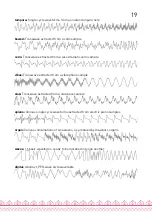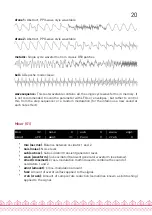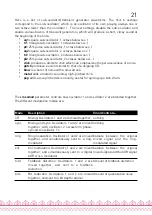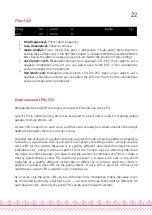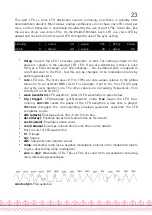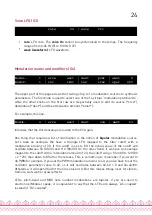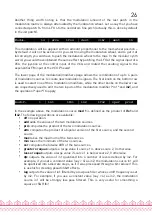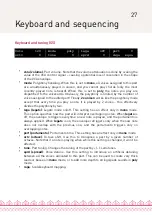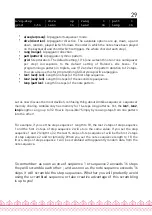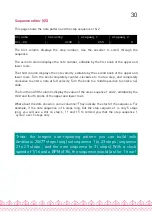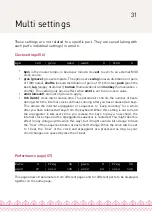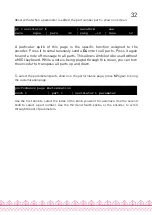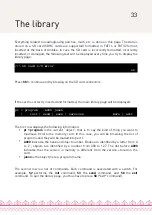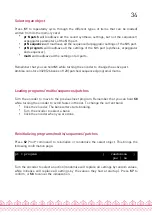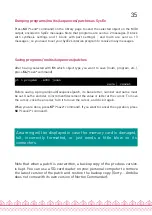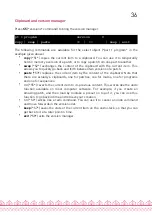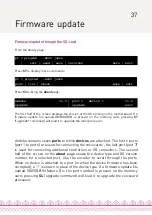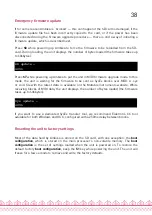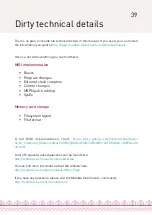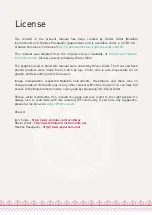
A/sq-step
| dire up
| rang 1
| patt 1
grid 1/16
| len1 16
| len2 16
| lenp 16
•
a/seq (arp/seq)
: Arpeggiator/sequencer mode.
•
dire (direction)
: Arpeggiator direction. The available options are up, down, up and
down, random, played (which follows the order in which the notes have been played
on the keyboard) and chord (which retriggers the whole chord at each step).
•
rang (range)
: Arpeggiator direction.
•
patt (pattern)
: Arpeggiator rythmic pattern.
•
grid
: Step duration. The default setting, 1/16 (one sixteenth note or one semiquaver
per step) corresponds to the default setting of Roland’s x0x boxes. For
programming a pattern in triplets, use 1/12 and set the pattern duration to 12 steps.
You can also use this for programming SID-style rapid-fire arpeggios.
•
len1 (seq1 len)
: Length (in steps) of the first step sequence.
•
len2 (seq2 len)
: Length (in steps) of the second step sequence.
•
lenp (patt len)
: Length (in steps) of the note pattern.
Let us now discuss the most devilish, confusing thing about Ambika sequencer: sequencer
memory sharing. Ambika only has memory for 16-steps long patterns. Yet, the
len1
,
len2
,
lenp
lengths can go up to 32. How is it possible? Simply by reusing steps from one pattern
into the other!
For example, if you set the step sequence 1 length to 18, the last 2 steps of step sequence
1 and the first 2 steps of step sequence 2 will store the same value. If you set the step
sequence 1 and 2 length to 32, the last 16 steps of step sequence 1 will be the first 2 steps
of step sequence 2 and reciprocally. When you set the notes sequence length to 18, the
first 4 steps of step sequence 1 will be scrambled with apparently random data from the
note sequence.
So remember: as soon as one of sequence 1 or sequence 2 exceeds 16 steps
they will scramble each other ; and as soon as the note sequence exceeds 16
steps it will scramble the step sequences. Whether you will prudently avoid
using the scrambled sequence or take creative advantage of this scrambling
is up to you!
29





